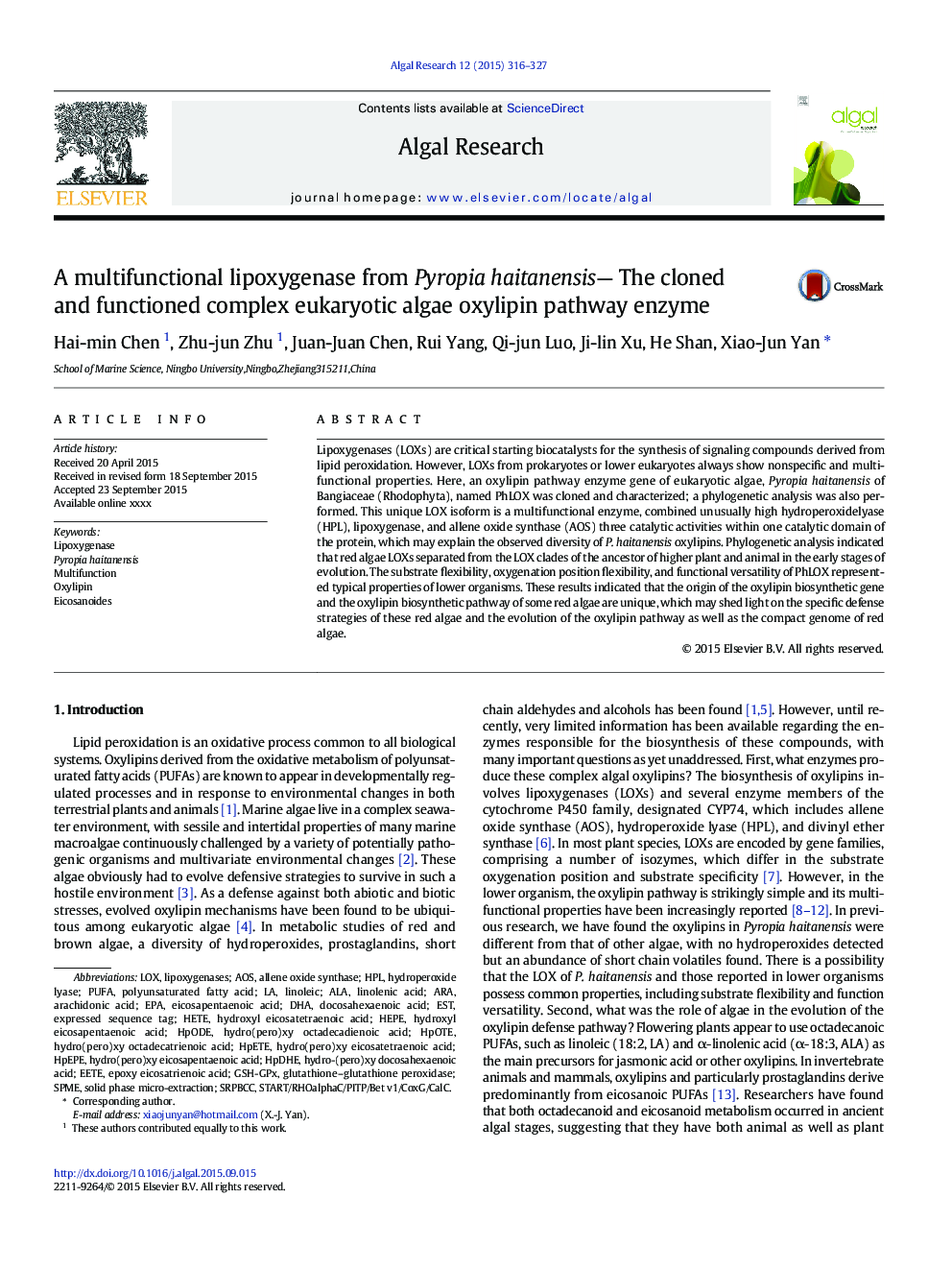| Article ID | Journal | Published Year | Pages | File Type |
|---|---|---|---|---|
| 8087858 | Algal Research | 2015 | 12 Pages |
Abstract
Lipoxygenases (LOXs) are critical starting biocatalysts for the synthesis of signaling compounds derived from lipid peroxidation. However, LOXs from prokaryotes or lower eukaryotes always show nonspecific and multifunctional properties. Here, an oxylipin pathway enzyme gene of eukaryotic algae, Pyropia haitanensis of Bangiaceae (Rhodophyta), named PhLOX was cloned and characterized; a phylogenetic analysis was also performed. This unique LOX isoform is a multifunctional enzyme, combined unusually high hydroperoxidelyase (HPL), lipoxygenase, and allene oxide synthase (AOS) three catalytic activities within one catalytic domain of the protein, which may explain the observed diversity of P. haitanensis oxylipins. Phylogenetic analysis indicated that red algae LOXs separated from the LOX clades of the ancestor of higher plant and animal in the early stages of evolution. The substrate flexibility, oxygenation position flexibility, and functional versatility of PhLOX represented typical properties of lower organisms. These results indicated that the origin of the oxylipin biosynthetic gene and the oxylipin biosynthetic pathway of some red algae are unique, which may shed light on the specific defense strategies of these red algae and the evolution of the oxylipin pathway as well as the compact genome of red algae.
Keywords
ALASPMEHpODEOxylipinHEPEPyropia haitanensislinoleicEPAHPLESTArachidonic acidEicosapentaenoic aciddocosahexaenoic acidLinolenic acidPolyunsaturated fatty acidPUFALOXAOSExpressed Sequence TagARADHAAllene oxide synthaselipoxygenaselipoxygenasessolid phase micro-extractionHPETEHETEHydroperoxide lyaseMultifunction
Related Topics
Physical Sciences and Engineering
Energy
Renewable Energy, Sustainability and the Environment
Authors
Hai-min Chen, Zhu-jun Zhu, Juan-Juan Chen, Rui Yang, Qi-jun Luo, Ji-lin Xu, He Shan, Xiao-Jun Yan,
